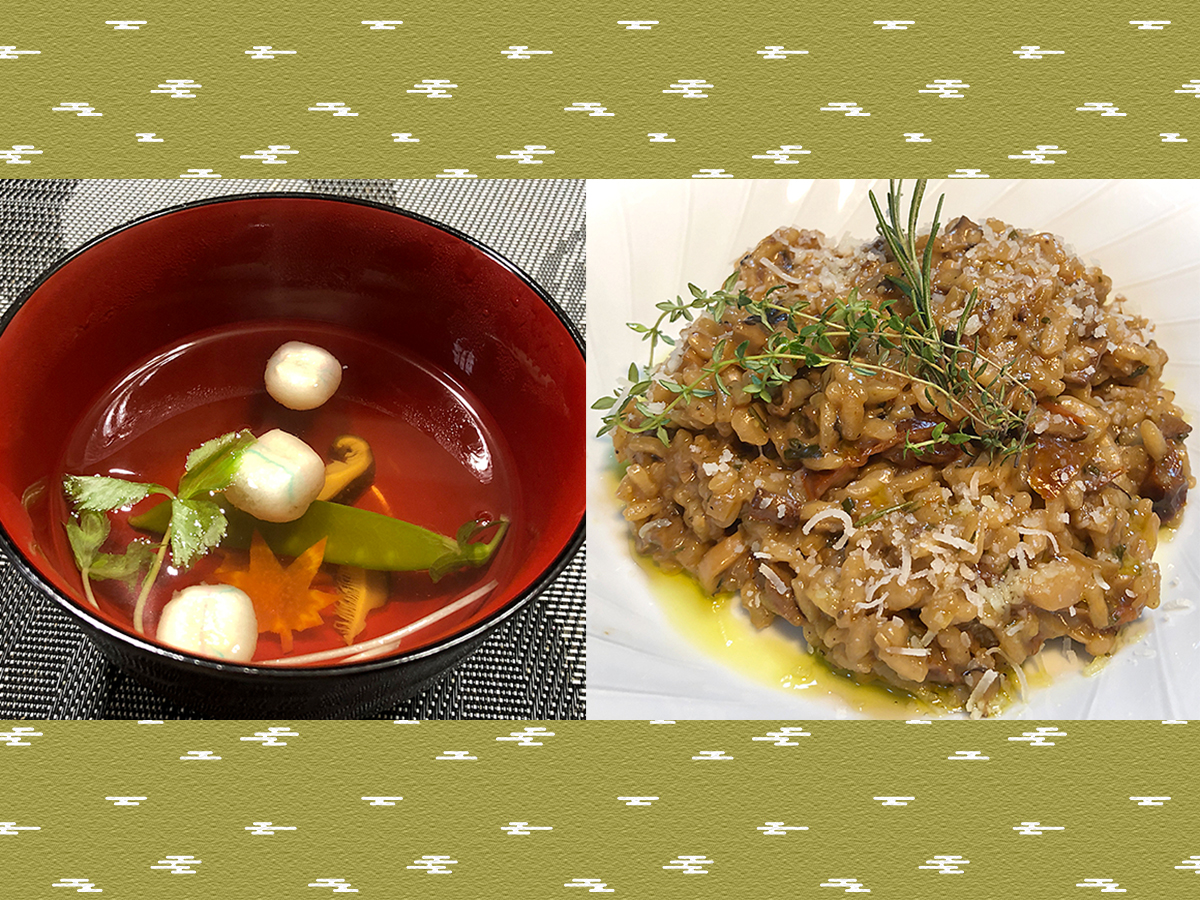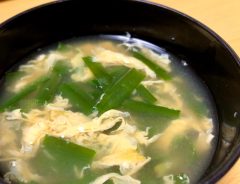
Photo by grape Japan
From suimono to risotto, this microwaveable dashi pot worked wonders in our kitchen
- Tags:
- Cooking / Dashi / dashi pot / Grape Shop / microwaveable / risotto / suimono
Related Article
-

Set off a gorgeous Japanese fireworks show with color changing sake glasses
-

The easiest way to wash a curry pot is also the most delicious
-

Experience a part of Japanese culture with the prettiest origami earrings
-

When Japan’s octopus wieners go wrong, they get downright terrifying
-

Simple trick to make the fluffiest egg soup has people in Japan hurrying to their kitchen
-

Colorful “Irotemari” Japanese glass balls can be used as single vases, reed diffusers and more


Dashi 出汁 is one of the most essential elements of Japanese cuisine. It's a family of stocks forming the base of everything from miso soup, clear broths, noodle soup broths, and mixed into countless other dishes. The simplest dashi is only made with two ingredients: kombu seaweed and katsuobushi 鰹節 dried bonito, a fish related to tuna. The kombu usually comes dried, and unless you have a special shaving tool at home, you'll probably get your bonito in the form of pre-shaved kezuri-bushi 削り節 flakes.
Nothing compares to genuine dashi stock brewed freshly from real katsuobushi and kombu, but since it's a bit of a hassle to prepare just right, many people simply use a granulated form of dashi instead.
But if you have this "Microwaveable Delicious Dashi Pot," you'll be able to easily brew the perfect dashi stock and then conveniently store dashi in the refrigerator once you're done. If you enjoy cooking full meals, freeing up your stove to prepare other dishes can be very convenient, especially if you only have a small stovetop to work with.
We took home the Microwaveable Delicious Dashi Pot to try it out for ourselves, and quickly discovered that it was great for making a rich dashi broth that could be enjoyed by itself, but it also came in handy to make not only various Japanese soups and stews but also Western cuisine like risotto!
Microwaveable Delicious Dashi Pot
Photo by grape Japan
The pot comes in three simple parts: the pot itself with easy-to-read measuring lines in milliliters, the strainer, and a tight-fitting lid.
Photo by grape Japan
Check out the Microwaveable Delicious Dashi Pot at grape SHOP.
(We use WorldShopping Global. The grape SHOP page is in Japanese, but if you see the WorldShopping widget appear at the bottom of the page, that product can be shipped overseas)
Making dashi with the Microwaveable Delicious Dashi Pot
Just like many things when it comes to cooking, the quality of the end result reflects the quality of the ingredients you use. Although you can use standard whole dried kombu and katsuobushi sold in Japanese / Asian specialty shops or online retailers, high-quality versions make for amazing dashi. We found a pack of three kombu harvested in Hokkaido, one from Rishiri 利尻, one from Hidaka 日高 and one from Ra'usu 羅臼.
Photo by grape Japan
For our bonito shavings, we used premium honkarebushi 本枯節 (from Kagoshima Prefecture) which is bonito that has been dried, matured, and fermented more than three times to maximize the umami.
Photo by grape Japan
Following the instructions in the attached booklet, we cut a square of kombu about 2 inches in length, and placed it at the bottom of the strainer. We chose the Ra'usu kombu which is better suited to the delicate suimono 吸い物 clear soup which we intended to use the dashi for.
Photo by grape Japan
We then added katsuobushi without packing it tightly and filling it up to about an inch or so below the top, and filled the pot with 800 milliliters of water.
Photo by grape Japan
We slowly placed the strainer full of ingredients into the water, making sure that the tab at the top of the strainer was aligned with the pot's handle.
Photo by grape Japan
Then it was into the microwave oven which we set at 500 W for 7 minutes.
Photo by grape Japan
Look at that beautiful color. The aroma was amazing! We poured part of the dashi into a saucepan for cooking and the rest went into our fridge. Thanks to the lid on top, you can store it and use it the next time you need it!
Photo by grape Japan
Making Suimono (clear Japanese soup)
Although miso soup is the most common application for dashi, if you really want to appreciate the taste of dashi, one of the best ways, second only to drinking your dashi by itself (which we recommend as well!) is making a clear soup called suimono 吸い物. This kind of soup is a great way to highlight seasonal ingredients since the clear broth allows them to be seen.
For the liquid ingredients, we used 350 milliliters of dashi soup, one tablespoon of sake, one tablespoon of light usukuchi 薄口 soy sauce, and a pinch of salt.
The solid ingredients were temari-fu 手毬麩, wheat gluten in the shape of temari decorative balls, sliced shiitake mushrooms, kinusaya 絹さや young snap pea pods, mitsuba 三つ葉 (Cryptotaenia japonica), and some red Kintoki carrots 金時ニンジン from Kyoto which we sliced into thin rounds and carved a maple leaf design.
Photo by grape Japan
Photo by grape Japan
The mitsuba is delicate and should be added to the serving bowl at the end, but the other solid ingredients can be cooked from the beginning with the liquid ingredients. Bring to a boil then quickly reduce to low for a minute, then remove from heat.
Photo by grape Japan
Add mitsuba and serve!
Photo by grape Japan
In addition to suimono you can use it in miso soup, takikomi seasoned Japanese rice, and as a base for oden, which we tried here.
Since our Microwaveable Delicious Dashi Pot was so handy in making Japanese cuisine, it wasn't long before we were trying out Western cuisine.
Since risotto depends a lot on broth, we thought it would be a good candidate!
Porcini and Dried Tomato Risotto
For this risotto, we used about 300 grams of Carnaroli rice (Arborio also works), 3 small cloves of garlic (finely chopped), 200 grams shallots (finely chopped), a tablespoon of fresh thyme (finely chopped), a tablespoon of rosemary (finely chopped), with extra sprigs of thyme and rosemary for garnish, 2 tablespoons of butter, 4 beef bouillon cubes, 2 tablespoons of olive oil, 20 grams sun-dried tomatoes, 20 grams dried porcini mushrooms, 2 fresh Eryngi (King Trumpet) mushrooms (chopped), half a teaspoon of allspice, 1 teaspoon freshly ground black pepper, and optionally, white truffle salt and some Pecorino Romano.
Photo by grape Japan
The Microwaveable Delicious Dashi Pot was perfect for creating the broth from the dried porcini and sundried tomatoes. You'll need about 1600 ml of broth in total. First make a concentrated porcini and tomato broth by placing the two ingredients in the pot with 800 ml of water and heating it in the microwave oven for 7 minutes at 500 W. Pour the broth into a saucepan, add another 800 ml of water and the four bouillon cubes, and heat until bouillon is dissolved.
Photo by grape Japan
The advantage of using the Microwaveable Delicious Dashi Pot, in this case, is you can not only make your broth but also soften the dried ingredients at the same time. Take out the reconstituted porcini and tomatoes and chop them coarsely.
Next, in a large frying pan, sautee the chopped shallots in butter at medium heat for three to four minutes, add the porcini and tomatoes and cook for another four minutes.
Photo by grape Japan
Add the garlic, Eryngi, thyme, rosemary, pepper, and allspice, and sautee for another three to four minutes.
Photo by grape Japan
Add the rice along with the olive oil and stir well for a few minutes with a wooden spoon.
Photo by grape Japan
Add about 250 ml of broth in the saucepan, stir well and simmer for about five minutes or until it has been absorbed. Repeat this process with another 250 ml of broth, and so on and so forth. Check the rice as you go to see how well it is getting cooked. If you run out of broth, add hot water, and continue stirring until the rice is no longer crunchy and properly cooked. The whole process could take anywhere between 30 to 45 minutes.
Photo by grape Japan
When the rice is cooked, add half a teaspoon of salt and stir well OR if you have white truffle salt, add a small pinch of salt and then sprinkle some of the truffle salt on the risotto when you serve it. Grate some of the Pecorino if you have it, drizzle some virgin olive oil and garnish with a spring of thyme and rosemary.
Photo by grape Japan
Check out the Microwaveable Delicious Dashi Pot at grape SHOP.
(We use WorldShopping Global. The grape SHOP page is in Japanese, but if you see the WorldShopping widget appear at the bottom of the page, that product can be shipped overseas)